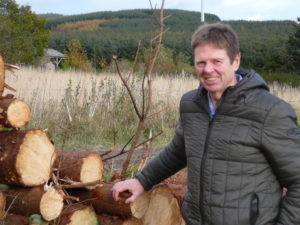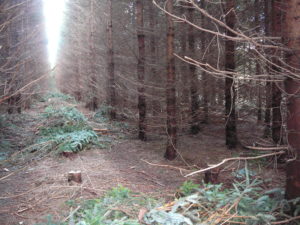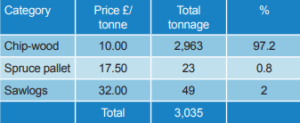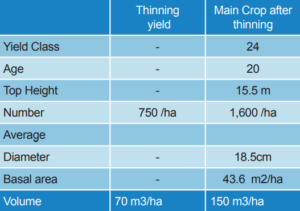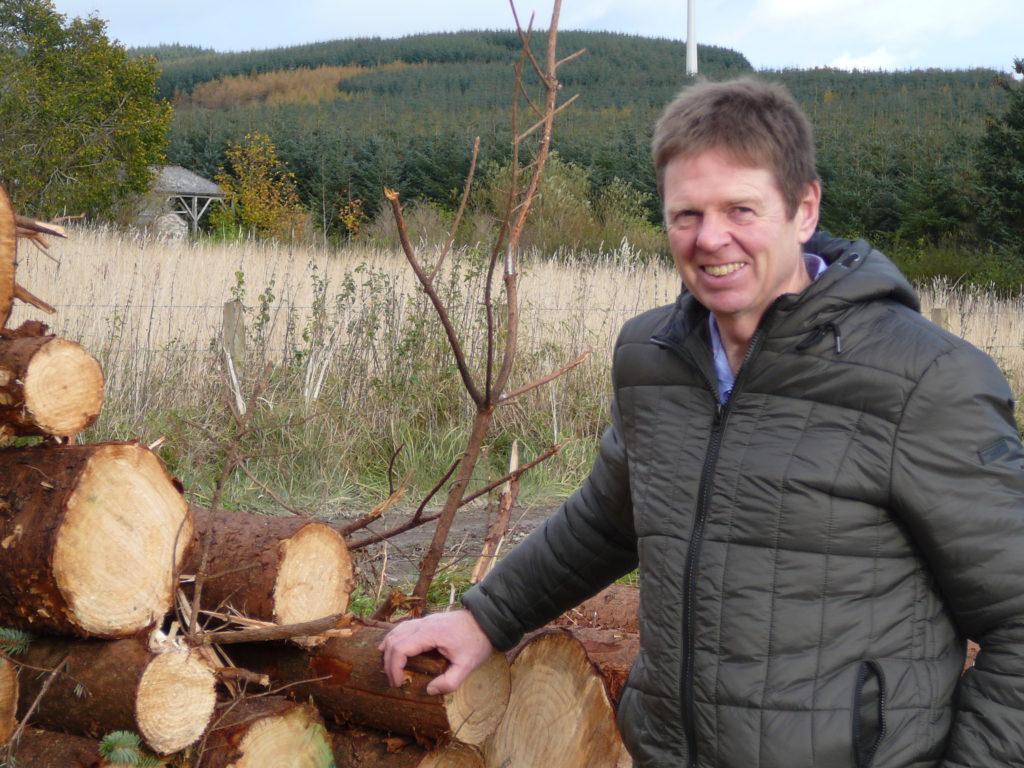Farm woodlands case study – First Thinning at Myreton Farm
15 March 2018Clive Streeter lives at Myreton, near Keith in Moray.
In 1997 Clive decided to plant seventy two hectares of commercial forestry under the Grampian Forest Challenge Fund, leaving just a few paddocks around the house. The woodland is predominantly Sitka spruce as shown in the table below. It was planted in two phases in 1998 and 2001.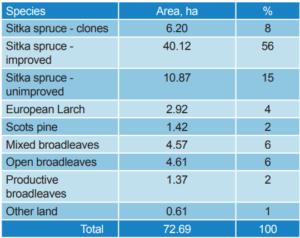
Thinning
As the crop matures it is important to thin it every five years or so, starting at about twenty years of age. Sitka spruce is a semi-shade bearing species and benefits greatly from the removal of the poorer and smaller trees in the crop to allow more room for the best trees to grow. The objective is for the crop to contain in excess of 65% sawlogs by volume when clearfelled at about 45 years of age. Clive expects the final crop to produce over 450 tonnes per hectare and to have produced another 250 tonnes per hectare in thinnings.
Timber sale
Clive employed a local forestry consultant as his agent to sell the timber as a competitive standing sale between the sawmillers and timber merchants in the region. The successful purchaser arranged and paid for all the harvesting, extraction and haulage; paying the owner an agreed sum per tonne for each category of timber. The agent prepared a sale contract, invoiced for the timber on Clive’s behalf and supervised the work. The first thinning covered about 40 hectares of the better growing crops in the more accessible areas and yielded over 70 tonnes per hectare. 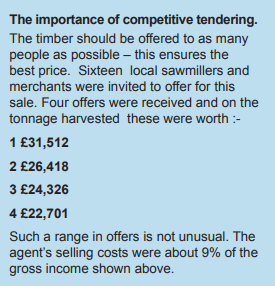
Most of the crop was thinned by removing every fifth row to create access racks and then lightly thinning the remaining four rows.
The out-turn is shown in the table below.
The spruce crops are growing rapidly on these fertile exarable soils and much of the crop is Yield Class 24. This means that the maximum average annual increment is 24m3/ha per annum. This table shows the average stocking in some plots after the thinning, and the quantities removed.
What happens next?
Some of the income from this harvesting will be reinvested in upgrading an access track to full forest road specification. In two or three years’ time this will allow Clive to thin the slower growing and less accessible areas left unthinned in 2017. The areas thinned in 2017 will be thinned again in 2022. Harvesting about half the woodland every three years will provide a regular, tax free income for the next twenty years. 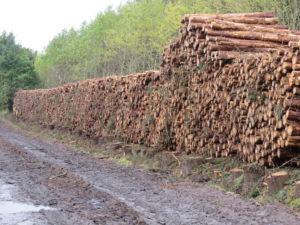
Further information
Further information on events and publications on farm woodlands can be found at www.fas.scot/topic/farm-woodlands/ Funded by the Scottish Government as part of their Farm Woodlands Farm Advisory Service activity.
Websites
www.ruralpayments.org/publicsite/futures/topics/all-schemes/forestry-grant-scheme
Sign up to the FAS newsletter
Receive updates on news, events and publications from Scotland’s Farm Advisory Service

